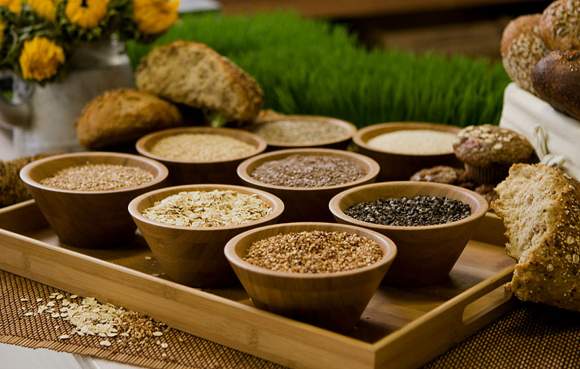
9 Diabetic Friendly Grains Beyond Brown Rice
Naturally YoursShare
Diabetes is one of the most prevalent condition throughout the world. Be it Type 1, Type 2 or gestational (which was in my case), as soon as we realize that we have joined the Diabetics camp, we immediately start controlling our sweet tooth in order to keep our sugar consumption under control.
Apart from cutting down on sweets and adding less sugar in your coffee, it is also extremely important to understand that we have to limit our calories intake and add more foods which are of low glycemic index in our diet.
Low glycemic Index foods are those which take longer time to get digested and therefore release the sugars in our blood at a slow pace. This in turn prevents sudden spikes in the sugar levels.
In addition to its high carbohydrate content, white rice also has a high glycemic index. Replacing it with either brown,red or black rice which are high in fiber helps to keep the sugar levels stable.
Below are a list of 9 awesome whole grains which you can effectively use in place of rice.
1. Amaranth
Health benefits: Gluten free, High protein (15-18%), great source of calcium, fiber, iron, potassium, and many other vitamins and minerals.
How to cook: Add 2 cups water to 1 cup amaranth grain, bring to a boil, then simmer for 15-20 minutes
2. Foxtail millet
Gluten free, high in dietary fiber, Low Glycemic index, reduces the levels of triglycerides, LDL and VLDL, magnesium present in millets is a co-factor in various enzymes involved in the secretion of insulin and metabolism of glucose in the body
How to cook: Pressure cook 1 cup of foxtail millet with 2.5 cups water and 1/2 tsp salt for three whistles. Turn off the flame.
3. Quinoa
Highest protein content, gluten free, Rich in fiber, iron, magnesium etc, easy to cook
How to cook: Pressure cook 1 cup of quinoa with 2.5 cups water for three whistles. Simmer for 5 minutes and turn off the flame.
4. Kodo millet
High fibre and energy content, tastes like rice, Kodo contains Copper, deficiency of which impairs sugar tolerance. Research has identified anti-diabetic compounds i.e. Quercetin and Phenolic acids which are present in kodo millet.
How to cook: Pressure cook 1 cup of kodo millet with 2.5 cups water and 1/2 tsp salt for two whistles. Turn off the flame.
5. Buckwheat
High in magnesium, phytonutrients, and dietary fiber, gluten free
How to cook : Add 2 cups water to 1 cup buckwheat grain, bring to a boil, then simmer for 20 minutes
6. Little millet
Low cholesterol, gluten free, high in protein and dietary fiber
How to cook: Pressure cook 1 cup of little millet with 2.5 cups water and 1/2 tsp salt for two whistles. Turn off the flame.
7. Barnyard millet
Gluten free, has the highest fibre and iron content of all the millets
How to cook: Pressure cook 1 cup of barnyard millet with 2.5 cups water and 1/2 tsp salt for two whistles. Turn off the flame.
8. Barley
High in soluble fiber which prevents the carbohydrates from getting absorbed too quickly and raising the blood sugar level. Low glycemic index, high in magnesium
How to cook: Pressure cook 1 cup of Barley with 3 cups water for about 25 minutes after the first whistle.
9. Rye
A very good source of dietary fiber, phosphorus, magnesium, and vitamin B1. a rich source of magnesium
How to cook : Soak 1 cup of rye grain for about 2 hours. Combine the grains with 4 cups of water in a pan, bring to a boil, simmer, close with a lid and cook for about 45 minutes.
ABOUT THE AUTHOR

Priya Prakash, Co-Founder, Naturally Yours
With over 6 years of experience in the organic industry, Priya is a strong believer in using healthy and easy to use alternatives in daily life. She passionately advises her friends, family and customers by sharing with them practical and easy ways to include healthy alternatives in their daily life.
